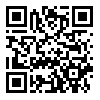Volume 14, Issue 3 (8-2022)
jorar 2022, 14(3): 163-175 |
Back to browse issues page
Download citation:
BibTeX | RIS | EndNote | Medlars | ProCite | Reference Manager | RefWorks
Send citation to:



BibTeX | RIS | EndNote | Medlars | ProCite | Reference Manager | RefWorks
Send citation to:
Vakilian Sayyah M, Aghajani H A, Agha Ahmadi G A, Rahmaty M. Analyzing Dimensions, Consequences and Inequalities of Organizational Citizenship Behavior in Non-governmental Organizations of Crisis Management (Experimental Evidence: Red Crescent Society of the Islamic Republic of Iran). jorar 2022; 14 (3) :163-175
URL: http://jorar.ir/article-1-782-en.html
URL: http://jorar.ir/article-1-782-en.html
Department of Management and Entrepreneurship, University of Mazandaran, Mazandaran, Iran
Abstract: (2142 Views)
INTRODUCTION: This research aimed to provide a dynamic model of Organizational Citizenship Behavior (OCB) in crisis management non-governmental organizations with a social approach (experimental evidence:IRCS).
METHODS: This applied research was conducted using a mixed (quantitative-qualitative) method to analyze the data. The statistical population consisted of university professors as well as the managers and experts of the Iranian Red Crescent Society, who were selected by the snowball sampling method. The total number of experts in the Iranian Red Crescent Society and in the academic community accounted for 10 individuals (n=5 each), and the sampling continued until reaching theoretical saturation. The required information was collected through observation, in-depth and semi-in-depth interviews, review of documents, and experts' opinions; finally, appropriate measurement tools were prepared using the exploratory factor analytical statistical method,. In this research, the Delphi technique and the Decision-Making Trial and Evaluation Laboratory-based Analytic Network Process were employed to determine and prioritize criteria and sub-criteria. For this purpose, the pairwise comparison matrix was used to determine the weight of the criteria.
FINDINGS: In this study, helping behaviors, individual initiatives, organizational obedience, organizational loyalty, chivalry, civic virtue, and personal development were among the dimensions of OCB in descending order.
CONCLUSION: The results of this research showed that the consequences of OCB included an increase in performance productivity and effectiveness, the promotion of positive relations between employees, more efficiency in allocating resources, reduction in maintenance costs, the provision of necessary flexibility for innovation, improvement of customer service, and effective use of scarce resources.
METHODS: This applied research was conducted using a mixed (quantitative-qualitative) method to analyze the data. The statistical population consisted of university professors as well as the managers and experts of the Iranian Red Crescent Society, who were selected by the snowball sampling method. The total number of experts in the Iranian Red Crescent Society and in the academic community accounted for 10 individuals (n=5 each), and the sampling continued until reaching theoretical saturation. The required information was collected through observation, in-depth and semi-in-depth interviews, review of documents, and experts' opinions; finally, appropriate measurement tools were prepared using the exploratory factor analytical statistical method,. In this research, the Delphi technique and the Decision-Making Trial and Evaluation Laboratory-based Analytic Network Process were employed to determine and prioritize criteria and sub-criteria. For this purpose, the pairwise comparison matrix was used to determine the weight of the criteria.
FINDINGS: In this study, helping behaviors, individual initiatives, organizational obedience, organizational loyalty, chivalry, civic virtue, and personal development were among the dimensions of OCB in descending order.
CONCLUSION: The results of this research showed that the consequences of OCB included an increase in performance productivity and effectiveness, the promotion of positive relations between employees, more efficiency in allocating resources, reduction in maintenance costs, the provision of necessary flexibility for innovation, improvement of customer service, and effective use of scarce resources.
Article Type: Research article |
Subject:
Other matters related to crisis, disasters and rescue & relief
Send email to the article author
| Rights and permissions | |
 |
This work is licensed under a Creative Commons Attribution-NonCommercial 4.0 International License. |







